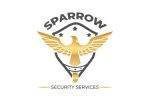About/Surveillance & Monitoring
Surveillance & Monitoring:
24/7 monitoring services for individuals, properties, and assets to detect and mitigate threats.
Surveillance and monitoring security services involve the continuous observation and analysis of areas, assets, or individuals to deter, detect, and respond to potential security threats. These services use various technologies, personnel, and strategies to maintain safety, protect assets, and gather intelligence. Surveillance and monitoring are vital in preventing unauthorized access, criminal activity, or security breaches, and they play a central role in both physical and digital security.
Key Components of Surveillance and Monitoring Security Services
CCTV and Video Surveillance
- Closed-Circuit Television (CCTV): Cameras strategically placed to monitor areas in real-time, providing visual records that can be reviewed if incidents occur.
- IP and Network Cameras: Internet-connected cameras allowing remote monitoring and access to footage from anywhere.
- Video Analytics: Software that uses artificial intelligence to automatically detect unusual activities, such as unauthorized access or loitering, and alerts security personnel.
Access Control and Intrusion Detection Systems
- Access Control Systems: Tools such as key cards, biometric scanners, and RFID technology that monitor and restrict access to specific areas.
- Intrusion Detection Systems: Sensors placed on doors, windows, and perimeters to detect and alert for unauthorized access or breaches.
- Alarm Systems: Systems that trigger alerts for unauthorized entries, motion detection, or breaking of physical barriers.
Perimeter and Area Monitoring
- Perimeter Surveillance: Monitoring the boundaries of properties or facilities to detect and prevent unauthorized entry or intrusion.
- Motion Detection Sensors: Devices that detect movement in specific areas and alert security staff when unexpected activity is observed.
- Thermal Imaging Cameras: Used especially in low-light conditions, these cameras detect heat signatures to identify the presence of people or vehicles.
Remote Monitoring Services
- Remote CCTV Monitoring: Allows off-site security personnel to monitor live video feeds, providing real-time responses to incidents.
- Security Operations Center (SOC): A centralized command center where security professionals monitor multiple feeds, access alerts, and respond to incidents.
- Virtual Patrols: Remote surveillance “patrols” done periodically or on-demand by security personnel to ensure a property’s security.
Mobile and On-Site Patrols
- Guard Patrols: Security guards physically patrolling areas to detect and deter suspicious activity.
- Mobile Surveillance Units: Vehicles equipped with surveillance equipment that patrol large or vulnerable areas to enhance security coverage.
- Incident Reporting and Response: Security officers observe, report, and respond to incidents on-site, providing a physical deterrent and immediate intervention if needed.
Intelligence Gathering and Analysis
- Threat Intelligence Monitoring: Collecting and analyzing data on potential threats from sources like social media, the dark web, and intelligence feeds.
- Pattern Recognition: Identifying patterns of behavior that may indicate a potential threat or security risk.
- Predictive Analysis: Using data analytics to anticipate potential security events or breaches and mitigate risks proactively.
Cyber Surveillance and Network Monitoring
- Network Monitoring: Continuous observation of network activity to detect unauthorized access or cyber threats.
- Intrusion Detection Systems (IDS): Software that detects suspicious activities in digital environments, like unusual logins or data transfers.
- Data Monitoring and Access Logs: Tracking and logging access to sensitive information and systems to protect against data breaches.
Benefits of Surveillance and Monitoring Security Services
- Deterrence: Visible surveillance and monitoring reduce the likelihood of criminal activity by increasing the perception of risk for potential offenders.
- Early Threat Detection: Continuous monitoring allows for the immediate detection of security incidents, enabling quicker response and potentially reducing damage or loss.
- Evidence Collection: Video and data records provide essential evidence for investigations, insurance claims, or legal proceedings.
- Operational Insights: Monitoring data can provide insights into operational patterns, assisting with resource management and optimizing security deployment.
Personnel and Technology in Surveillance and Monitoring
Surveillance and monitoring services often combine trained personnel with advanced technologies, such as:
- Surveillance Operators: Skilled professionals who monitor feeds, interpret security data, and escalate incidents when necessary.
- Analytics Software: Technology that detects and flags abnormal patterns or behaviors, such as crowd gathering, unauthorized access, or cyber threats.
- Drones and Robotic Surveillance: In some contexts, drones and robotic systems can provide additional, flexible monitoring capabilities in hard-to-reach or large areas.
These services are highly customizable and can range from localized monitoring in a small business to comprehensive surveillance systems for large facilities or organizations. The goal is to enhance security, reduce risks, and provide peace of mind by keeping a close watch over valuable assets and areas.
A proud member of the Virginia Diverse Chamber of Commerce

